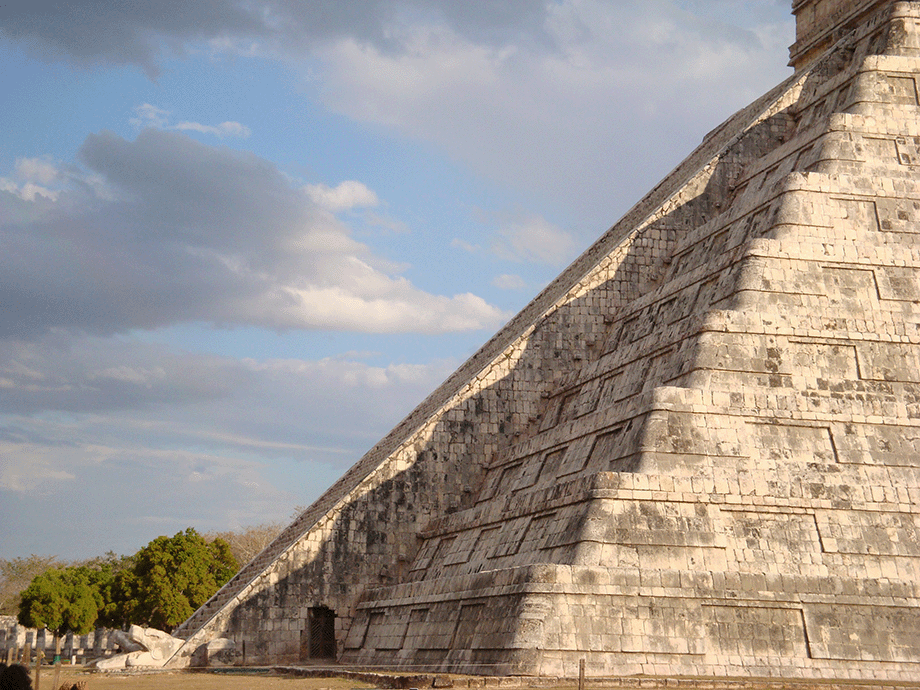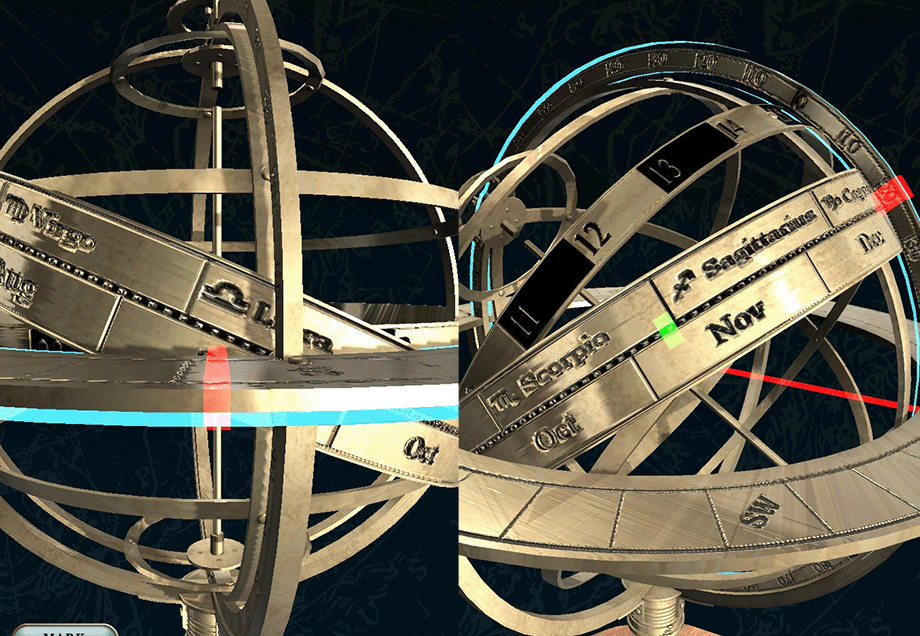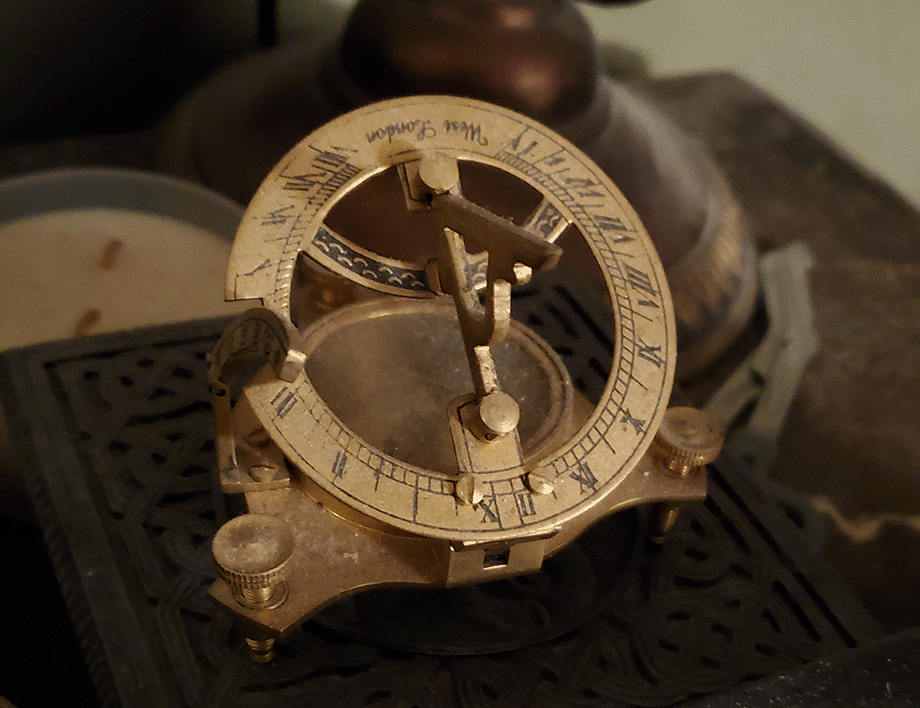Twice in a solar year, due to a quirk of astral mechanics, the rotational axis of the Earth aligns straight up and down with regard to our path around the sun. These days are called by the old Latin term equinox, because the hours of the night and the day are roughly equal. From thence the spinning top we live on continues to wobble over until one of the solstices, at which point it reverses.
This is handy, as if our poles keeled over further it would result in one half of the planet being constantly exposed to the sun and the other half enduring a perpetual frozen night. If such a cataclysm was gradual enough, species might evolve that could live in the “twilight zone” around the equator, where the oblique rays of sunlight could be similar to northern Alaska in summertime.
Our ancestors seemed keenly aware of this horrible potential. As the days shortened in the northern hemisphere (as they soon will be doing), they conceived great fire festivals, to push back the cold and the dark, and remind the sun through their earthly bonfires, that we were still down here, and still interested.
When enough generations had passed, it became fairly well accepted that the sun was going to come back in the springtime. By modern reckoning, Spring starts on the date of the Vernal Equinox, when the sun transits from Pisces into Aries. This perhaps is an accurate date if you live at the latitude of central Europe, as much human population did in the Neolithic. This was important for settled agrarian societies, that had become dependent on domesticated crops. “Spring” was when it was safe to plant, because the likelihood of damaging winter frosts was over.
But further south in Egypt, the beginning of the agricultural year was the annual flooding of the Nile, which happens about mid-August. The Nile flood is the result of torrential rains down in Africa. The rainy season was presaged to the Egyptian by the rising of the star Sirius in the southeastern sky. This visibility of the Canopus constellation is also occasioned by our wobbly world and it’s eccentricity.
During the period the Nile was in flood, the general populace that were usually engaged in farming were put to work as unskilled labor in various public building projects such as the erection of pyramids, obelisks, and temples, the majority of which were focused on keeping the sun spinning round the Earth in it’s usual happy way. This was an expression of “Ma’at” or “Truth” which has a very different meaning in ancient Egypt than in our present day.
Truth to the Egyptian was cosmic Law. It was the nature of things the way they were ordained, written down in the secret language of hieroglyphs by ibis-headed Tehuti for all eternity. Ma’at is symbolized by a single feather, both in texts and iconography, unless She appears as human goddess with the feather on her head. 1Frequently deities in Egyptian art are often depicted as nearly identical persons with the glyph of there name as a headdress. Thus the four goddesses guarding the shrine of Tutankhamen’s canopic jars can be identified as Isis, Nephthys, Serqet, and Neith. Ma’at is perhaps most famously known to Western eyes as the feather on the balance in the Weighing of the Heart ritual from the Egyptian Book of the Dead. This image is the source of our “scales of justice” and related imagery.
To the Egyptian way of thinking, the “Truth” that rested in the heart of the deceased was more about these cosmic rules than whether or not they had prevaricated. There was a long list called “The Negative Confessions” that the dead person was supposed to recite prior to, or during, the weighing of the heart. These were a recitation of wrong things that the deceased hadn’t done.
Again, for the purposes of the ritual, it didn’t matter whether or not the mummy had actually done them, it was important to say that it hadn’t. There’s also a handy little rubric, usually inscribed on a basalt scarab placed over the heart during the wrapping process, that admonishes the heart not to betray them, to keep silent if they had broken the rules. Obviously our modern ideas of Justice and Law differ.

For the ancients, though, the doctrine of sympathy meant that the image of a thing was connected to the thing itself. So if you said you weren’t guilty, then you magically became not guilty (I’m certain there are number of persons incarcerated who wish that had worked). It was important to keep the universe in balance. Otherwise the world might flop over and the sandstorms of Set/Sutekh would overwhelm all civilization. Better to build another pyramid or temple to make sure the sun god stays happy.
Or maybe there’s more to it. We first have records of the famed obelisks being used for astronomical purpose by Aristarchus of Samos at the library of Alexandria. It’s entirely possible, given phenomena we can still observe, that the Egyptian temple and funerary architecture were astronomically aligned. This should not surprise us. In the late Stone Age and early Bronze age architecture was one of the few methods of accurately telling time.
Solar, lunar, and astronomical alignments are not a feature of Egyptian culture alone. Stonehenge and similar megalithic sites are fairly well understood as calendars. Mesoamerican pyramids and structures throughout Asia and Africa have solstice “clocks” built into them. Often these take the form of a slot or window, that shines light into a particular niche or area on the day of the winter solstice.
The equinoxes are a consequence of the solstices. If the planet didn’t reach over to the extremes at the beginning of Cancer and Capricorn, it wouldn’t have these crossing points. The equinoxes form a 90 degree angle to the solstices, so the year gets divided into four quarters, which are subdivided into three astrological signs.
As noted, the Vernal Equinox is the beginning of Aries. The Autumnal one, the beginning of Libra. As our trip around the sun is a tad over the 360 days that the Chaldees worked out (and applied to the Zodiac as degrees), these celestial events wander between the 21st to 23rd of March, June, September, and December. If you have an ephemeris handy (you don’t?) you can extrapolate the transit of the Sun into the relevant sign and plot it on your own calendar. There are at least a couple of occult almanacs that will give you the information, and the mundane Farmers’ Almanac will reference them as the beginnings of the seasons.

The quarter points also define the Cardinal signs, one for each element. Aries is fire, of course, and Cancer is water. Libra is the cardinal air sign, and Capricorn, represents earth. The next sign around in each quarter is a Fixed sign, Taurus/Earth; Leo/Fire; Scorpio/Water; and Aquarius/Air. The last sign in each quarter is the Mutable sign, signifying the nature of that sign’s character transitioning back toward the Cardinal. These are Gemini/Air; Virgo/Earth; Sagittarius/Fire; and finally Pisces/Water.
The Cardinal is an emergent energy. It has great force, and may be viewed as archtypical of the elemental nature of the sign. Planets on cardinal points influence powerfully, but sometimes in a raw or brutal way. Subtlety and sophistication may be lacking. This is good to keep in mind when picking times for planetary workings, or elemental based magic.
Magical timing and the use of astrology in ritual, derives from centuries of tradition. Much of it may have passed into Medieval texts with no real understanding of the ancient rationale. There are a number of examples where these correspondences were copied unquestioned into modern ritual manuals, and passed into present day with even less connection to the rudimentary ideas of relating magic to the greater state of the universe.
The approach of “scribe an amulet of bronze with this sigil in the hour of Venus” is, to my mind, far less efficacious, and less personal, than working out how the skies will aid your goal. There are apps aplenty to cast horoscopes and tally the planetary hours (I have several ). If you’re old school, or just want to understand the bones of the thing, you can use a paper ephmeris2 There are pdf versions available for free, here . to work out when the planets, signs and elements bode well for your venture. If I’m planning something especially complex, I will spot check the software results with paper calculus, and possibly even personal observation (saving pennies for that working astrolabe).
Even if you don’t want to go that extreme, understanding the why of the ritual holidays, whether we call them sabbats, or equinoxes, or the first day of fall, is, to my way of thinking, integral to the idea of a nature-adjacent lifestyle. Nature, after all, includes the sun, moon, stars, galaxies, and all the great big unknowns out there in the sky. 3If you’re really dedicated, or compulsive, or maybe a little wacky, you can even calculate things like seasonal shifts on the planets as part of your zodiac. The information is available out there. But maybe that is a little wacky.

I hope this has given you some things to think about when you see these days cycling around on that Witches’ Calendar plaque above the altar. I find the movements of the heavens fascinating, as they do affect how we live down here on earth. These wiggles of the planet give us the seasons, spawn hurricanes, monsoons, and typhoons, and control the hibernation of animals and plants. We are here because of it.
I’ll be back next week with other reflections. Thank you for reading.

